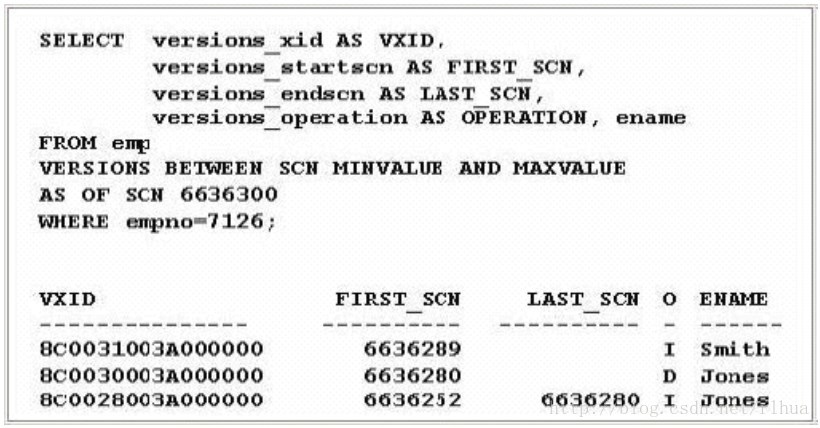QUESTION 37
The EMP table has some discrepancy in data entry with a particular employee ID. You execute the query as
shown in the Exhibit to retrieve all versions of the row that exist between two SCNs.
View the Exhibit.
Which two statements about the results of the query shown in the Exhibit are correct? (Choose two.)
A. The LAST_SCN value in the first row is NULL, which means that the versions of the row still exist at SCN
6636300.
B. The LAST_SCN value in the second row in NULL, which means that the version of the row still exists at
SCN 6636300.
C. The LAST_SCN value in the third row is 6636280, which means that the version of row exists above SCN
6636280.
D. The LAST_SCN value in the second row is NULL, which means that the version of the row no longer exists
because it was deleted.
Answer: AD
同616题:http://blog.csdn.net/rlhua/article/details/19165769
Explanation/Reference:
Section: SQL, PL/SQL, Packages, Functions, Jobs & Views
Dunno -Exhibit Reference:Exhibit Located in 1Z0-045 Exam - Exact Question/Answer
http://www.oracle-developer.net/display.php?id=320
If we look at the VERSIONS_OPERATION column, we can see that the second record is actually the delete
operation against the last row (specified by 'D').
B is Wrong because the record has been deleted.
D is Wrong because the NULL Value does NOT mean the row no longer exists.
http://www.rampant-books.com/art_otn_flashback_tips.htm
The metadata also gives us an indication that the delete operation was the final version of this data.The end
timestamp of the version is NULL which tells us that there is no superceding record.
Note that all the changes to the row are shown here, even when the row was deleted and reinserted. The
VERSION_OPERATIONcolumn shows what operation (Insert/Update/Delete)was performed on the row. This
was done without any need of a history table or additional columns.
